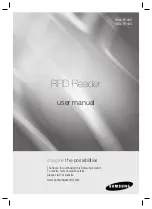
4
Section 2 – Installation
Before Hydraulic Installation:
Before proceeding with the installation please take
note of the following information:
HAZARD OF EXPLOSION, FIRE AND SCALDING
BURNS.
The cooling water feed line must not have any
obstructions which could cause buildup in
pressure.
When installing system, allow sufficient room
to remove the heater element and other ser-
viceable items when necessary.
To avoid excessive pressures, do not connect
any valves or obstructions which could prevent
free discharge from relief valve in a safe man-
ner. Vent outlet of pressure relief valve to a
drain where steam or scalding water will not
cause personal injury. Do not allow drain to
freeze or corrode shut.
Use only on concrete floor or other nonflam-
able surface. Use in an open area with at least
1 foot clearance from walls and combustible
materials.
1. This product is designed to roll over smooth flat
floors. Do not roll over uneven floors and on ramps.
Do not move while hot or containing fluid.
2. Reduced diameter fittings may be used down to 1”
if they do not reduce flow rate and increase pres-
sure drop significantly.
3. Use softened water for cooling.
4. Use and maintain oil filters.
Hydraulic Installation:
HAZARD OF EXPLOSION, FIRE AND SCALDING
BURNS.
Connect the 1/2” NPT port identified as “COOL-
ING OUTLET” to an open or plant drain that
contains no valves or obstructions that could
impede discharge. Review the condition of po-
tential hot water or steam going down a plant
drain. Verify that local codes and materials are
acceptable for this service.
This system is for use only with liquid phase
heat transfer fluids suitable for a max bulk
temperature of 550°F at atmospheric pressure.
Use with any other fluids could result in death,
personal injury, fire or damage to the equip-
ment.
Do not place valves in vent line or allow vent
line to become even partially clogged. Vent line
on the expansion tank must be piped to a safe
area and/or catch drum. Provisions must be
taken to allow constant slope on vent to allow
draining and to prevent liquids from collect-
ing in the vent pipe. Vent should be periodi-
cally checked to verify it is free and clear of all
obstructions. Vent piping should be no smaller
than connection on the system. Do not place
valves in vent line as system must remain vent-
ed at all times.
Do not overfill expansion tank.
Do not allow heat transfer oil to saturate in-
sulation. Failure to comply could result in per-
sonal injury or property damage.
Read and understand all instructions in this
manual and other manuals shipped with the
system prior to installation. All work speci-
fied within this instruction sheet should be
performed by qualified personnel as required
(electrician, plumber or mechanic).
1. System should be mounted on a solid level founda-
tion. Where required, containment area should be
provided in case of fluid loss. The system should
be installed at the same level or higher than the
process to be heated.
2. Before installing, check that all mounting bolts on
equipment are tight. These sometimes loosen in
shipment.
3. Piping to and from the process should match the
piping on the system. If extremely long runs of pipe
are to be used, one size larger than the system con-
nections can be used to minimize pressure drop.
Piping should be arranged to be self-supporting
and not supported by the heat transfer system. On
long runs, isolation from thermal expansion should
also be provided. If the above are not taken into
consideration, unnecessary stress will be put on
the pump and/or piping.
4. Thread sealant and/or gaskets used on process
piping should be rated for temperatures and heat
transfer fluid to be used. Check with manufacturer
for compatibility.
5. The piping of the entire system should be arranged
to minimize pockets where air may be trapped.
Manual bleed valves must be provided at any loca-
tion where air may be trapped.
6. Connect the cooling water supply (30 psi to 80 psi)
to the unit’s 1/2” NPT “WATER SUPPLY/COOLING
INLET” port with suitable pipe or hose.




































